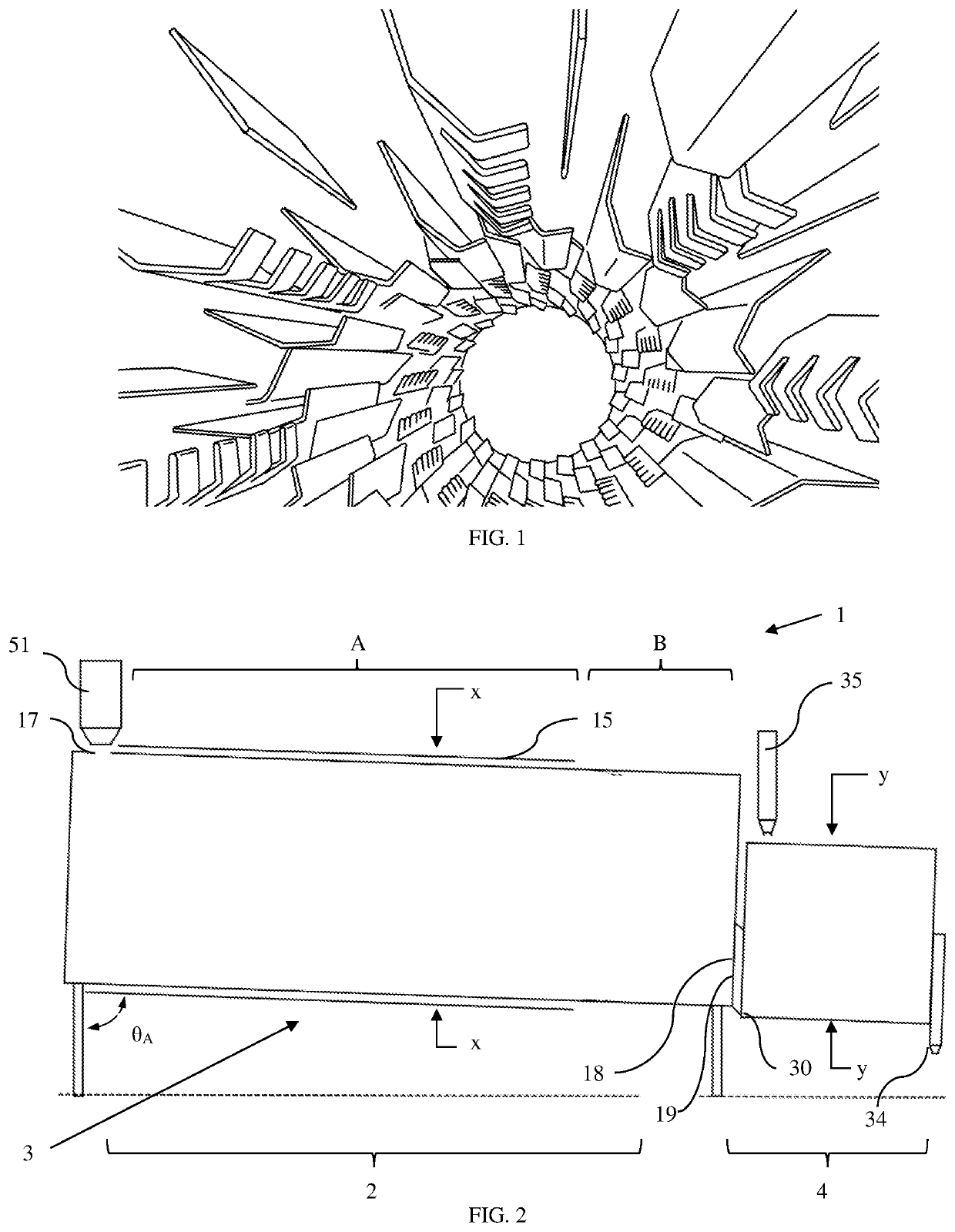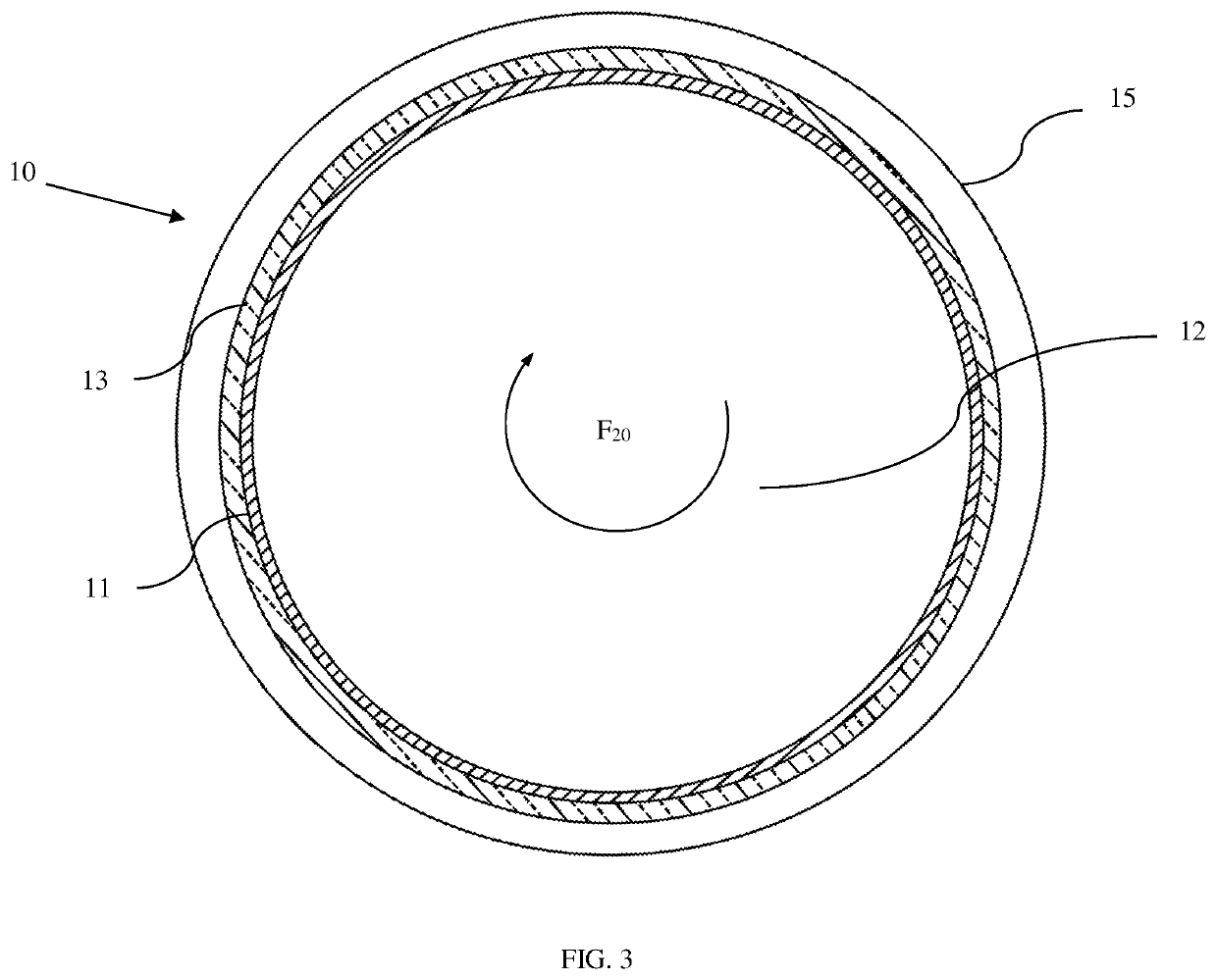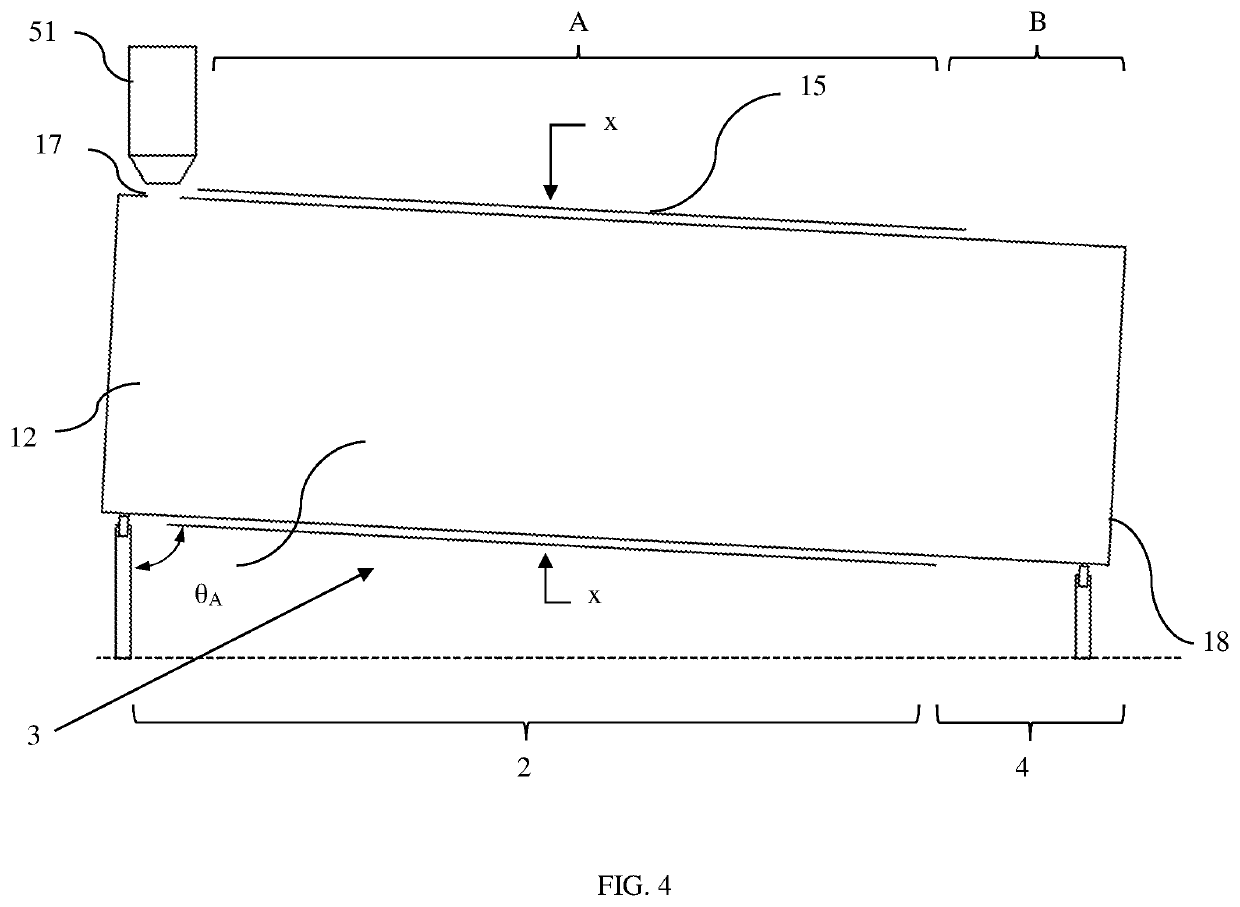Rotational Mixing and Induction Heating System and Method for Recycling Asphalt Using the Same
a technology of mixing and induction heating and asphalt, which is applied in the direction of electric/magnetic/electromagnetic heating, working up pitch/asphalt/bitumen by mixing fractions, and ways. it can solve the problem that the flight will lack the advantageous properties of some specific heating transfer flights
- Summary
- Abstract
- Description
- Claims
- Application Information
AI Technical Summary
Benefits of technology
Problems solved by technology
Method used
Image
Examples
example 1
[0085]Asphalt processor 1 is composed of asphalt heating system 2, induction heating system 3, and additive mixing system 4, as seen in FIG. 2. Asphalt processor 1 is designed to heat RAP, Virgin Aggregates, virgin asphalt, a combination of RAP and virgin asphalt, and optionally additives, i.e. asphaltic material, to the requisite temperature for paving applications.
[0086]Asphalt heating system 2 is comprised of heating drum 10, oriented at angle θA. Angle θA is selected to allow asphaltic material to roll to bottom of heating drum 10 at a preferred rate of 6 to 8 inches per rotation. A decline of 7° to 10° is envisioned, however the angle can differ based on the viscosity of the asphaltic material, speed of the heating drum rotation, presence of transfer flights, gravity, humidity and other environmental factors surrounding and within the heating drum.
[0087]Heating drum 10 is formed of heating drum interior 12, heating drum wall 11, and wall insulation 13, as seen in FIG. 3. The he...
example 2
[0090]Asphalt processor 1 is designed to heat RAP, Virgin Aggregates, virgin asphalt, a combination of RAP and virgin asphalt, and optionally additives, i.e. asphaltic material, to the requisite temperature for paving applications. In this variant, asphalt heating system 2 and additive mixing system 4 are both integrated into heating drum 10, as seen in FIG. 4.
[0091]Heating drum 10 is similar to example 1, having transfer flights, an angled orientation, such as angle θA, or combination thereof to move asphaltic material to roll to bottom of heating drum 10 at a preferred rate of 6 to 8 inches per rotation. Heating drum 10 is composed of heating drum wall 11, of a induction-responsive material, and wall insulation 13, discussed in Example 1. The induction heat coils heat the drum at heating zone A, resulting in the asphalt heating to about 300° F. to 350° F. as the asphalt travels through heating zone A. The asphalt then enters heating zone B, which is unheated and serves as additive...
example 3
[0093]Asphalt processor 1 is designed to heat RAP, Virgin Aggregates, virgin asphalt, a combination of RAP and virgin asphalt, and optionally additives, i.e. asphaltic material, to different temperatures in asphalt heating system 2, seen in FIG. 5. In this variation, the asphalt processor can include additive mixing system 4 in the heating drum or have as additive mixing system 4, as seen in FIG. 4, an independent mixing system disposed downstream of the heating drum, as seen in FIG. 2. Accordingly, the systems discussed in Examples 1 and 2 can be incorporated in this variation of the invention.
[0094]Heating drum 10 is composed of heating drum wall 11, of an induction-responsive material, and wall insulation 13, discussed in Example 1. The induction heat coils heat the drum at heating zone A to between 350° F. and 400° F., resulting in the asphalt heating to about 325° F. to 375° F. as the asphalt travels through heating zone A. The asphalt then enters heating zone D, which is heate...
PUM
| Property | Measurement | Unit |
|---|---|---|
| temperature | aaaaa | aaaaa |
| temperature | aaaaa | aaaaa |
| temperature | aaaaa | aaaaa |
Abstract
Description
Claims
Application Information
 Login to View More
Login to View More - R&D
- Intellectual Property
- Life Sciences
- Materials
- Tech Scout
- Unparalleled Data Quality
- Higher Quality Content
- 60% Fewer Hallucinations
Browse by: Latest US Patents, China's latest patents, Technical Efficacy Thesaurus, Application Domain, Technology Topic, Popular Technical Reports.
© 2025 PatSnap. All rights reserved.Legal|Privacy policy|Modern Slavery Act Transparency Statement|Sitemap|About US| Contact US: help@patsnap.com



